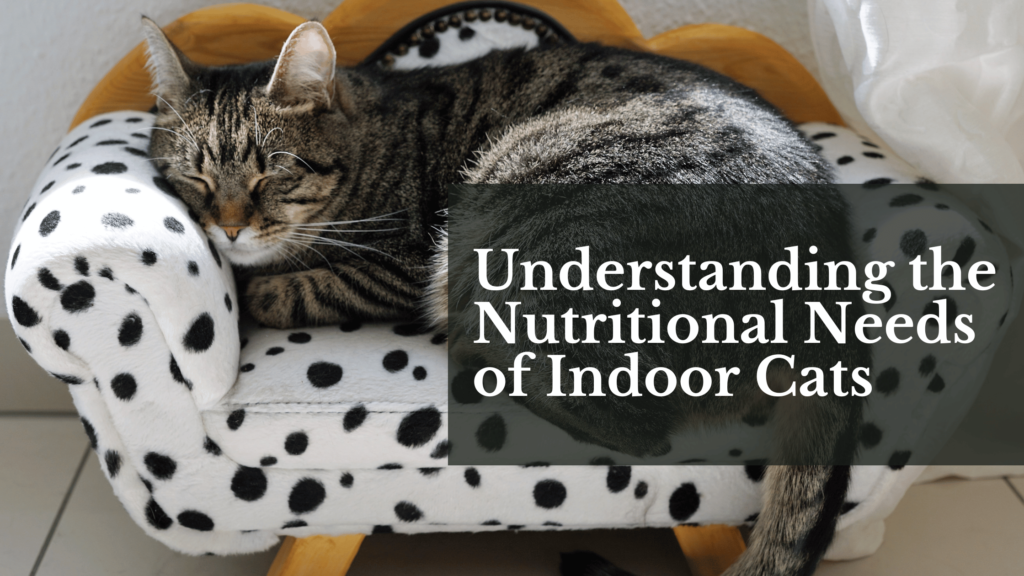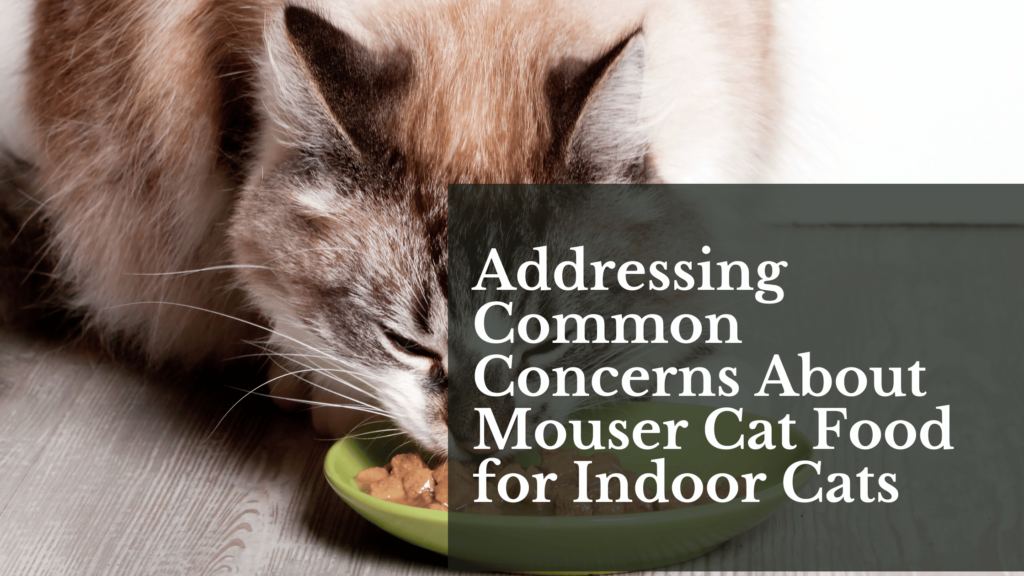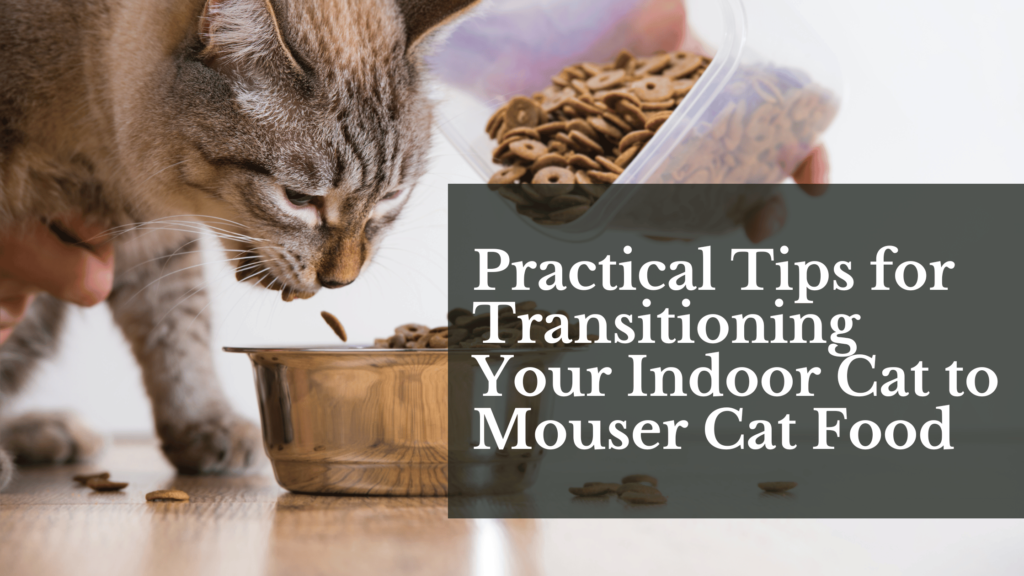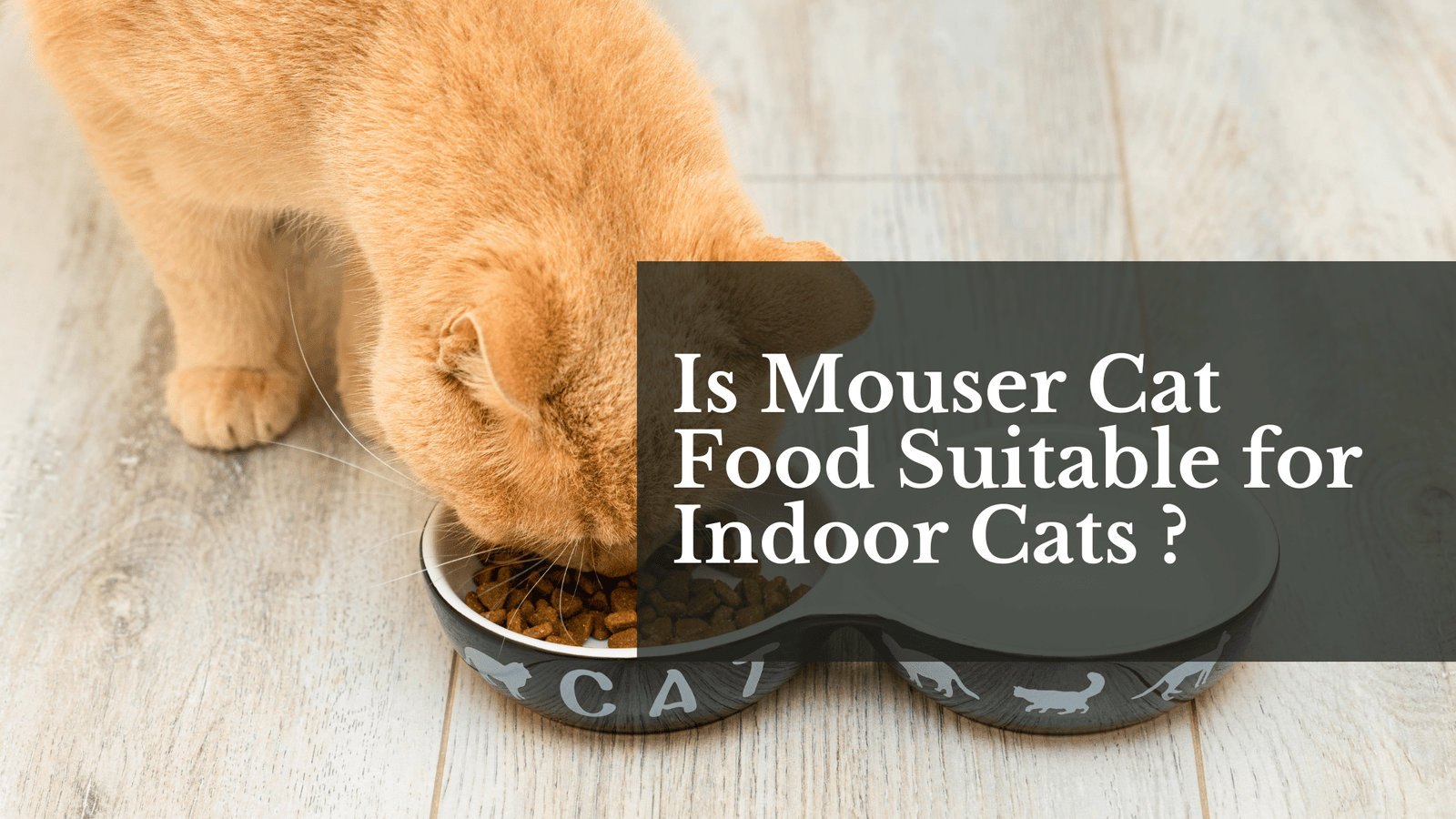Here, in this exhaustive review, we have managed to assess the qualities that make Mouser food ideal for indoor cats. Getting nutrition-specific from indoor felines is an obligation, assuming they have their special needs and lifestyle because of their unique challenges and nature.
Although some thinking wrong about Mouser cat food ingredients but, we still provide balanced food that is aimed at the specific needs of indoor cats, including weight control and hairball prevention.
Cat switching to Mouser’s food will become an easy and successful method if welcomed gradually from a variety as well as monitored actively through checking on how the process is working With consistent efforts and consulting your veterinarian, you can ensure the transition process runs smoothly and make sure your indoor cat has access to all the needed nutrition for prosperity.
Understanding the Nutritional Needs of Indoor Cats

It’s undeniable that the presence of a cat in your house is extremely heartwarming, and there are lots of things associated with this, including the companion and taking responsibility for the cat’s needs. First and foremost, diet is the most interventionist of all. With the plethora of options available, it’s natural to wonder: Mouser is one of the cat foods that is well-known and suitable for indoor and outdoor cats. In its entirety, we look deep into what feline nutrition is and maintain that the food we have set aside for our indoor cats is what feline nutritional needs are.
The Evolutionary Perspective
Before we talk about the nutrition of indoor cats, let’s think about the origins of cats, let’s begin with cats’ evolutionary history. Modern domesticated cats have origins in the tamed wildcats, and they show signs of adaptation in the cat family with lives characterized by hunting. Their natural menu tends to be restricted to the anatomy of tiny animals like mice, birds, and insects. These biological origins provide us with profound insight into what the texture, taste, and nutritional requirements of our cats look like.
Unique Challenges Faced by Indoor Cats
In contrast to their outdoor ‘twin-sisters’, the indoor cats’ live style is incredibly different. With no sun to set on them, they are deprived of the hunting behaviors they are used to outside. This may cause them unique problems. In cases where indoor cats are not able to hunt for their own fresh prey, it may be hard for them to maintain healthy weight levels, cope with boredom, and even feel depressed. Meeting these challenges involves scrutinizing their needs in terms of nutrition.
Deciphering the Dietary Needs of Indoor Cats
The environmental particularities of mice sometimes contribute to the specific dietary requirements of indoor cats as compared to outdoor cats. Consequently, they need to have their calorie count monitored to ensure they do not gain weight and not develop health complications, which are mostly caused by weight. Not just that, indoor felines may have to add a greater fiber to their diet to maintain proper digestive health and prevent hairballs, which are common in longer-haired breeds.
Exploring the Mouser Cat Food Range
Having that in mind, we will continue the conversation about the Mouser cat food and its relevance for indoor cats. Mouser is a food brand for cats that is made to meet the nutrition requirements of all cats. Just like their wild ancestors, cats from our homes love meat and many products display high-quality protein sources such as chicken, turkey, and fish on their packaging. Another benefit is that the Mouser cat food is added with significant amounts of vitamins and minerals so as to augment health and wellness.
Evaluating the Ingredients
In addition, the most essential part of choosing between various cat foods is noticing their components list. High standard of Mouser cat food, calling itself premium and, in the worst case, taken with impunity, uses artificial flavors, colors, and preservatives. It is quality that my meddlesome trailing of-kat the question. Indoor cat’s diet is so carefully designed in such a way as their ancestor. Furthermore, providing a range of formulas that are custom-made according to specific life stages and dietary demands, which are all aimed at assuaging various indoor cats’ dietary needs at the different stages of their lives, is regarded as one of Mouser cat food’s attributes.
Addressing Common Concerns About Mouser Cat Food for Indoor Cats

As the next part of our discussions on whether or not Mouser cat food caters to indoor cats, we need to eliminate existing fears people might have and misconceptions about this topic. In this segment, we will express the idea of destroying the unbelievable and giving light where darkness prevails the gender suitability of Mouser cat food for indoor felines.
Myth 1: “Mouser Cat Food Is Too High in Protein for Indoor Cats”
One common one is that a specific brand of cat food, i.e. Mouser, which is well-known for its focus on protein-rich ingredients, won’t provide the right kind of nutrients for indoor cats, according to this myth. On the contrary, protein should always be counted as a cat’s diet component, even though they are born not in the wild. Some cats may be challenged with excess protein intake but Mouser cat food is with special formulas which are designed to cater for the specific nutrients that are required for indoor cats, therefore, having the adequate protein is not an issue.
Myth 2: “Mouser Cat Food Doesn’t Address Indoor Cats’ Unique Needs”
It is also a fallacy that Mouser cat food cannot meet all the special requirements of indoor cats, such as weight control and hairball issues. Nevertheless, a deeper look at Mouser’s catalog shows a large number of solutions that can be the perfect ones for combating these issues. Indoor-based cats often struggle with weight management. These cats’ owners may find solutions in controlled formulas of Mouser cat food, which are rich in fiber and grain products. One of the problems these cats frequently face is obesity, and this product offers its control formula. In addition, it contains fibers and grain products, which are its ingredients.
Myth 3: “Indoor Cats Don’t Need Specialized Nutrition”
Some might believe that indoor cats are not extremely high on the list of needs when it comes to their diet and can be fine on any cat food available. On the contrary, it seems to undermine the effect of the unique obstacles indoor cats often face, such as a reduction in physical activity or possible boredom. The adaptation of their diet to overcome this challenge has a critical effect on their health and quality of life.
The resultant decrease in the incidence of such chronic illnesses would improve their quality of life and create a need for reduced government spending on healthcare. The Mouseer cat food product line is tailored to the particular needs of indoor cats; its products are developed so that these cats can get the nutrients they require.
Addressing Concerns: The Mouser Approach
Mouser feline food reflects a more holistic approach to cat nutrition, which involves looking at the innate dietary preference as well as the modification that indoor cats might require. Through the use of superior ingredients, balanced nutrition, and tailor-made formulas, the company intends to reach its goal of delivering nutrition meant to make an indoor cat healthy and active.
Customer Satisfaction and Reviews
The quality of the food that Mouser provides people confirms it. The words of cat owners, which are pretty positive, confirm that directly or indirectly, after the switch to Mouser products, indoor cats have improved the health, vitality, and satisfaction of these pet owners. The feed often comes in flavors that animals love. Kat owners experience the advantages of Mouser cat food in such areas as shiny fur and additional energy.
Practical Tips for Transitioning Your Indoor Cat to Mouser Cat Food

The “Gradual” transition of an indoor cat onto a new diet can be a stressful process only if you are organized and patient with your plans. Mouser cat food is indeed a high-quality and nutritionally balanced alternative for your feline friends. Therefore, in this final section, we provide some practical tips for you to easily introduce Mouser cat food into the diet of your feline acquaintance without any discomfort. by all means, please make his transition to Mouser cat food smooth and hang in there.
Tip 1: Gradual Introduction
Commence putting Mouse cat food separately into the pet cat’s dinner. Things about your initial mixing of Mouser food are probably with a smaller amount of the mouse’s current food, and you will gradually increase the proportion of the Mouser diet over a period of several days. Through this gradual transitioning, you eliminate the likelihood of your feline falling victim to any stomach upset, and he can gradually accept the new taste and texture.
Tip 2: Monitor Response
While a veterinarian, one thing you should consider is your cat’s reaction to the new food all the time; keep an eye on it. Pay close attention to their appetite and check their stool consistency as well as overall behavior. Mooser cater food could be bliss in the eyes of one kitty but peeve another one who might be rather reluctant to alter their long-settled food selection. Be patient and open-minded, ready to make modifications as necessary to the process of adaptation such that a smooth transition occurs.
Tip 3: Offer Variety
Mouser serves a complete assortment of cat food items, including dry kibble, wet food, and treats. Adding flavors that your cat is not accustomed to is sure to raise his chomping enthusiasm, but it will also ensure that his dinner provides him with minerals and vitamins in balance. Test out several Mouser recipes until you find the ones that your cat likes most and are convenient regarding its diet.
Tip 4: Maintain Consistency
Consistency during the transition to a new diet can make a huge difference in your cat’s diet. Once you do the first introduction of Mouser cat food correctly into their regular feeding schedule and portion sizes, aim to keep a consistent feeding schedule and the same portions. This way, they are able to avoid overeating and maintain a well-functioning gastrointestinal tract. Moreover, instead of making sudden changes, they strive to have smooth yet gradually altering diets to cause less stress and digestive discomfort.
Tip 5: Seek Veterinary Guidance
Ultimately, ask your veterinarian questions and get advice as you transition. Your vet can advise you on how to feed and customize your eating routine to meet your unique health requirements, considering nutritional aspects specific to your cat. Furthermore, your vet may help you determine the right proportions, feeding frequency, and whether a species-specific diet is needed for your indoor kitty.
Conclusion
Summing up, the built-to-mouser brand is surely one of the top brands that can tremendously feed your indoor pets. Cat owners can be at ease and confident that they provide their indoor cats with the nutrition they want to prosper with the great quality of food they know cat breeds would require. Through emphasizing the notion of balance, superior ingredients, and functional transition tips, Mouser cat food becomes a reliable choice that provides cats in apartments with means to promote their well-being and health.
FAQs
Is Mouser cat food real?
Regarding my last check, no company has distributed the brand related to cat food labelled ‘Mouser’. And I am afraid, you may be talking about a fictional gastronomical product or a word used non-literally.
What are the top 5 cat foods?
The quality of cat food depends on characteristics such as the source of food, the type of components, and the personal choice of cat owners. However, the popular cat food brands and ones of the highest quality category comprise Royal Canin, Hill’s Science Diet, Purina Pro Plan, Blue Buffalo, and Wellness.
Are mice good food for cats?
In fact, cats too feed upon mice, they are their prey and an article of food as well. But when your cat eats mice at home, it is generally not advisable since it can preliminarily infect with parasites, infection, and, in the long run, be harmful to the local wildlife population.
What is the best cat mouser?
Cats, by nature, are predators, and many breeds, including such as Felix, are prominent for their hunting skills and ability to retrieve small prey such as mice. Among popular cat breeds which are known for their mousing ability, the Maine Coon and Siamese cats are some of the ones. And then you also have Abyssinians, their Scottish Fold counterparts, and Bengals.
How do I make my cat a good mouser?
Reminding your cat’s innate hunting talents can be useful for their mouse catching. The toys imitating prey movements and games where the cat chases and pounces will lead to an effective play time, and building a reminiscent space or supervised hunting activities indoors can be considered.
Can mice smell cats?
The mice share a common feature with us in that they are known to be very sensitive to individual scents; in fact, they can smell the presence of animals, such as cats, even when they are a few meters away. In a sense, the scent of a cat could act as a deterrent for the mice; therefore, they would be more reluctant to make their presence known in places where they smell a predator’s presence.
What are mice’s favorite foods?
Mice have an omnivorous diet, and they eat everything around them, from tortillas to spaghetti. There is no prohibition for mice when it comes to practicing gastronomy. Some tastes of their foods touch the grains, seeds, nuts, fruits, and vegetables. They are actually opportunist feeders and would eat whatever they readily find, but this is dependent on the availability.
What smell do mice hate?
It is known that mice have a sense of unwanted fragrance. This includes peppermint, cloves, ammonia, and certain essential oils like tea tree oil and eucalyptus. The odors can perform naturally like repellents, and they can help keep mice from settling into your house.
What are mice scared of?
Being timorous animals naturally, mice are weary of thunder or sudden sounds and rapid movements. In their surroundings, they may have predators such as cats, dogs, and birds of prey. This might also make them withdraw from places with strong scents, besides new objects, that make them not feel secure at all.
